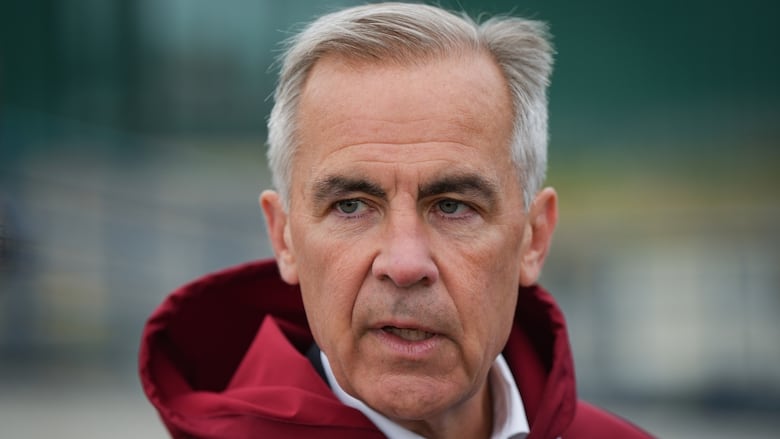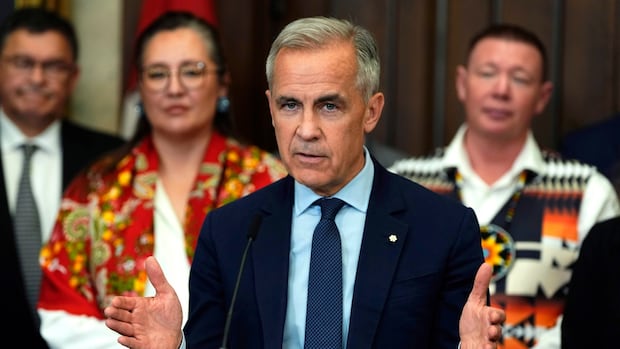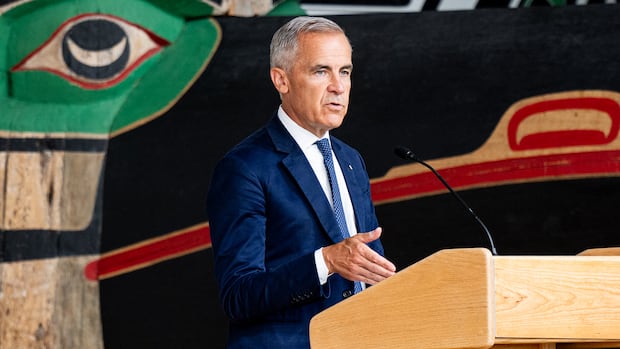Can Mark Carney move fast and not break things?
The greater challenge will be quickly fixing, improving and building things

It's easy to move fast if you're not worried about breaking things. The greater challenge is moving fast while fixing, improving and building things.
On the day, two months ago, that his new cabinet was appointed, Carney boasted that it was "among the fastest" swearings-in after an election and that the return of Parliament would be "one of the most rapid" in Canadian history. The government, he said, was "starting as we aim to go on."
"Our government will deliver its mandate for change with urgency and determination," he said. "We've been elected to do a job. We intend to do it quickly and forcefully."
That followed from Carney's earlier insistence that Canada needed "big changes" and that responding to the threat posed by Donald Trump would require doing "things that we haven't imagined before, at speeds we didn't think possible."
On a number of fronts, Carney's government is moving quickly toward those goals.
The government's first major legislation — Bill C-5, the One Canadian Economy Act, which allows for the expedited approval of large infrastructure projects — was tabled in the House of Commons just 19 days after the cabinet was sworn in. Twenty days after that the bill had passed both the House and Senate — a breathtakingly quick passage for legislation of such potential significance.
A few days after that bill was tabled, Carney announced the federal government would significantly accelerate its plan to spend more on national defence. During the campaign, the Liberals promised to exceed the NATO target of two per cent of GDP "before" 2030. In June, Carney said the government would hit that mark in the current fiscal year.
With the defence budget now slated to rapidly grow — and with Carney having promised to impose new discipline on overall federal spending — the prime minister has given ministers until the end of the summer to complete a federal program review aimed at finding billions of dollars in cuts or savings. Federal departments have also been given 60 days to identify federal regulations that can be eliminated.
Meanwhile, Carney has appointed a new clerk of the Privy Council and seemingly given him a mandate to make government itself move faster.
"Our internal processes have become quite complicated. When that happens, there is always the risk that following the process is so time-consuming that everything slows down — at a time when we need to speed up because the world is moving as fast as it is," Michael Sabia wrote in a note to public servants soon after his appointment.
"Windows of opportunity open and close. The world waits for no one."
The case for moving fast
Beyond the world's general state of impatience, there are a number of reasons why Carney might want or need to move fast.
The first and most obvious — the overarching challenge that Carney has framed his government within — is the economic and political crisis posed by Donald Trump. And to that one could add a housing crisis and a climate crisis.
As a newly elected prime minister — and one whose initial actions seem to be impressing a sizable number of voters — Carney will likely never have more political capital than he has right now. But having fallen short of winning a majority in the House, he also can't be sure of exactly how much time he'll have before facing voters again.
Moving fast might also be one way to demonstrate change — both in substance and style.
The Trudeau Liberals came to office promising a more active government, but also a more consultative government — a reaction to the idea that the previous Conservative government had been too heavy handed. And while Justin Trudeau has an incautious streak, his government could be methodical and tentative.
The government was also dogged by criticism that its ambitions exceeded its execution. And by the end of Trudeau's time in office, there was a new desire for action — particularly on housing. Even without the crisis posed by Trump, Carney might have come to office with a need to get things built and improve state capacity.
"Focus, change, action" is apparently something of a mantra in Carney's office. Purportedly a demanding boss, Carney comes to the job having spent significant time working in both the private sector and in and around government (the latter of which may have left him with a view about how governments work and how they don't).
But for the sake of both making the case for active government and rebutting the populist challenge, Liberals — and progressives in general — might also have a special interest in wanting to see government moving and acting as quickly and efficiently as possible. In the American context, consider the regrets expressed by some of former president Joe Biden's advisers and the calls for an "abundance agenda."
The challenges of moving fast
While officials in Ottawa are scrambling this summer to complete a spending review and stand up a new major projects office, there might be at least one noticeable gap in the government's rush to action.
If there was one way for the government to show that it was making a tangible difference in the lives of Canadians, it would be by attacking the housing crisis. And during the campaign Carney promised his government would help build new homes at "a pace not seen since the Second World War." But while the government has been demonstrably busy negotiating with Washington and pushing C-5, tangible movement on housing is so far less obvious.
There are also signs of potential danger ahead.
Policy analysts and public sector unions are already expressing concern about the potential consequences of the program review — and how quickly the government is moving to find cuts. However necessary it might be to increase spending on national defence or other areas, and whatever the public's general desire for greater fiscal discipline in Ottawa, the results of this spending review could expose some painful trade-offs — or at least compel Carney and his cabinet to defend some significant sacrifices.
C-5 may have also shown that there are real risks governments run when they try to move fast — at least when the rights of Indigenous Peoples are involved. The sheer speed of the bill's passage seemed to feed suspicions.
"I think the main issue I'm hearing about this bill is that it's being rammed through without consultation or first nations' free, prior and informed consent," Cindy Woodhouse Nepinak, national chief of the Assembly of First Nations, told a House of Commons committee in June.
The summits convened with First Nations leaders since C-5 received royal assent might have helped to address some concerns — and much will really depend on how the government makes use of C-5.
But the lesson of C-5's initial reception might be that moving fast requires even greater effort than moving slow.



